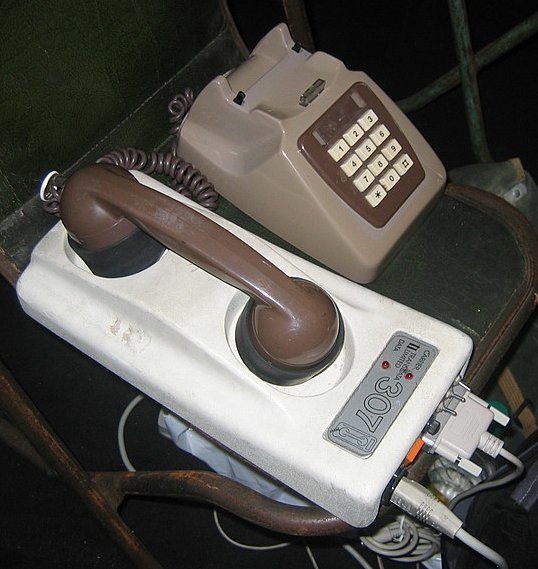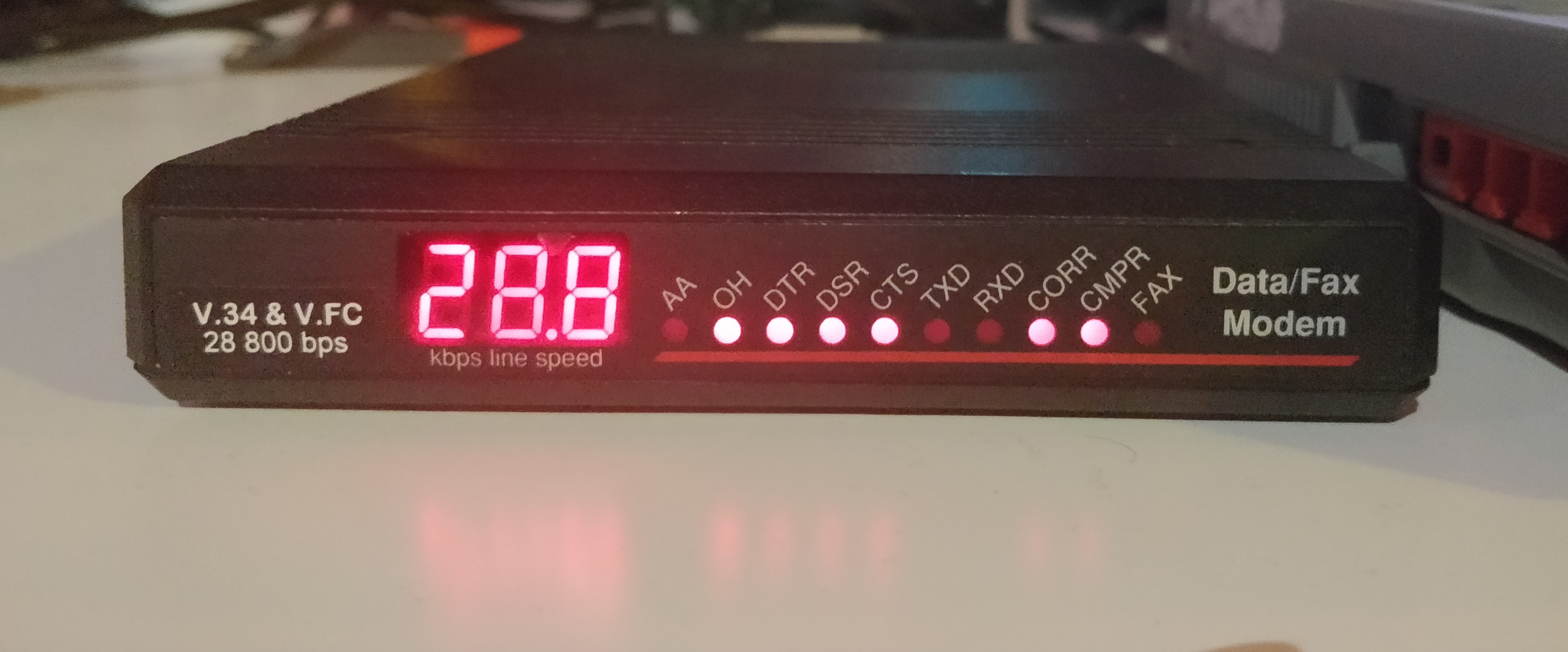|
Bell 212A
The Bell 212A modulation scheme defined a standard method of transmitting full-duplex asynchronous serial data at 1.2 kbit/s over analogue transmission lines. The equivalent, but incompatible ITU-T standard is V.22. Device The Bell 212 Dataset is a 1979-vintage modem used for communicating over telephone lines at 300 or 1200 bits per second. The 212A standard provides for the ability of a modem to auto-answer a ringing phone. Usage The Bell 212A scheme was the most common standard used for 1200 bps transmission on US data networks such as CompuServe during the period that dial-up Internet access was the norm (1980s and 1990s).Frank J. Derfler Jr."Selecting the right modem" ''PC Magazine'', pp. 224-233, January 1983.Frank J. Derfler"The Universal Data Systems' 212 LP modem" ''InfoWorld'', pp. 52-53, 9 August 1982. See also *List of device bandwidths This is a list of interface bit rates, is a measure of information transfer rates, or digital bandwidth capacity, at which dig ... [...More Info...] [...Related Items...] OR: [Wikipedia] [Google] [Baidu] |
Full-duplex
A duplex communication system is a point-to-point system composed of two or more connected parties or devices that can communicate with one another in both directions. Duplex systems are employed in many communications networks, either to allow for simultaneous communication in both directions between two connected parties or to provide a reverse path for the monitoring and remote adjustment of equipment in the field. There are two types of duplex communication systems: full-duplex (FDX) and half-duplex (HDX). In a full-duplex system, both parties can communicate with each other simultaneously. An example of a full-duplex device is plain old telephone service; the parties at both ends of a call can speak and be heard by the other party simultaneously. The earphone reproduces the speech of the remote party as the microphone transmits the speech of the local party. There is a two-way communication channel between them, or more strictly speaking, there are two communication channel ... [...More Info...] [...Related Items...] OR: [Wikipedia] [Google] [Baidu] |
Asynchronous Serial Communication
Asynchronous serial communication is a form of serial communication in which the communicating endpoints' interfaces are not continuously synchronized by a common clock signal. Instead of a common synchronization signal, the data stream contains synchronization information in form of start and stop signals, before and after each unit of transmission, respectively. The start signal prepares the receiver for arrival of data and the stop signal resets its state to enable triggering of a new sequence. A common kind of start-stop transmission is ASCII over RS-232, for example for use in teletypewriter operation. Origin Mechanical teleprinters using 5-bit codes (see Baudot code) typically used a stop period of 1.5 bit times.Dead link: 2015-Oct-03 Very early electromechanical teletypewriters (pre-1930) could require 2 stop bits to allow mechanical impression without buffering. Hardware which does not support fractional stop bits can communicate with a device that uses 1.5 bit tim ... [...More Info...] [...Related Items...] OR: [Wikipedia] [Google] [Baidu] |
ITU-T
The ITU Telecommunication Standardization Sector (ITU-T) is one of the three sectors (divisions or units) of the International Telecommunication Union (ITU). It is responsible for coordinating standards for telecommunications and Information Communication Technology Information and communications technology (ICT) is an extensional term for information technology (IT) that stresses the role of unified communications and the integration of telecommunications (telephone lines and wireless signals) and computers, ... such as X.509 for cybersecurity, Y.3172 and Y.3173 for machine learning, and H.264/MPEG-4 AVC for video compression, between its Member States, Private Sector Members, and Academia Members. The first meeting of the World Telecommunication Standardization Assembly (WTSA), the sector's governing conference, took place on 1 March of that year. ITU-T has a permanent secretariat called the Telecommunication Standardization Bureau (TSB), which is based at the ITU headquarters ... [...More Info...] [...Related Items...] OR: [Wikipedia] [Google] [Baidu] |
Modem
A modulator-demodulator or modem is a computer hardware device that converts data from a digital format into a format suitable for an analog transmission medium such as telephone or radio. A modem transmits data by modulating one or more carrier wave signals to encode digital information, while the receiver demodulates the signal to recreate the original digital information. The goal is to produce a signal that can be transmitted easily and decoded reliably. Modems can be used with almost any means of transmitting analog signals, from light-emitting diodes to radio. Early modems were devices that used audible sounds suitable for transmission over traditional telephone systems and leased lines. These generally operated at 110 or 300 bits per second (bit/s), and the connection between devices was normally manual, using an attached telephone handset. By the 1970s, higher speeds of 1,200 and 2,400 bit/s for asynchronous dial connections, 4,800 bit/s for synch ... [...More Info...] [...Related Items...] OR: [Wikipedia] [Google] [Baidu] |
CompuServe
CompuServe (CompuServe Information Service, also known by its initialism CIS) was an American online service provider, the first major commercial one in the world – described in 1994 as "the oldest of the Big Three information services (the others are Prodigy and America Online)." It dominated the field during the 1980s and remained a major influence through the mid-1990s. At its peak in the early 1990s, CIS was known for its online chat system, message forums covering a variety of topics, extensive software libraries for most computer platforms, and a series of popular online games, notably '' MegaWars III'' and '' Island of Kesmai''. It also was known for its introduction of the GIF format for pictures and as a GIF exchange mechanism. In 1997, 17 years after H&R Block had acquired CIS, the parent announced its desire to sell the company. A complex deal was worked out with WorldCom acting as a broker, resulting in CIS being sold to AOL. In 2015, Verizon acquired AOL, inclu ... [...More Info...] [...Related Items...] OR: [Wikipedia] [Google] [Baidu] |
Dial-up Internet Access
Dial-up Internet access is a form of Internet access that uses the facilities of the public switched telephone network (PSTN) to establish a connection to an Internet service provider (ISP) by dialing a telephone number on a conventional telephone line. Dial-up connections use modems to decode audio signals into data to send to a router or computer, and to encode signals from the latter two devices to send to another modem. History In 1979, Tom Truscott and Jim Ellis, graduates of Duke University, created an early predecessor to dial-up Internet access called the USENET. The USENET was a UNIX based system that used a dial-up connection to transfer data through telephone modems. Dial-up Internet has been around since the 1980s via public providers such as NSFNET-linked universities. The BBC established Internet access via Brunel University in the United Kingdom in 1989. Dial-up was first offered commercially in 1992 by Pipex in the United Kingdom and Sprint in the Uni ... [...More Info...] [...Related Items...] OR: [Wikipedia] [Google] [Baidu] |
List Of Device Bandwidths
This is a list of interface bit rates, is a measure of information transfer rates, or digital bandwidth capacity, at which digital interfaces in a computer or network can communicate over various kinds of buses and channels. The distinction can be arbitrary between a ''computer bus'', often closer in space, and larger telecommunications networks. Many device interfaces or protocols (e.g., SATA, USB, SAS, PCIe) are used both inside many-device boxes, such as a PC, and one-device-boxes, such as a hard drive enclosure. Accordingly, this page lists both the internal ribbon and external communications cable standards together in one sortable table. Factors limiting actual performance, criteria for real decisions Most of the listed rates are theoretical maximum throughput measures; in practice, the actual effective throughput is almost inevitably lower in proportion to the load from other devices ( network/ bus contention), physical or temporal distances, and other overhead in da ... [...More Info...] [...Related Items...] OR: [Wikipedia] [Google] [Baidu] |
Data Transmission
Data transmission and data reception or, more broadly, data communication or digital communications is the transfer and reception of data in the form of a digital bitstream or a digitized analog signal transmitted over a point-to-point or point-to-multipoint communication channel. Examples of such channels are copper wires, optical fibers, wireless communication using radio spectrum, storage media and computer buses. The data are represented as an electromagnetic signal, such as an electrical voltage, radiowave, microwave, or infrared signal. Analog transmission is a method of conveying voice, data, image, signal or video information using a continuous signal which varies in amplitude, phase, or some other property in proportion to that of a variable. The messages are either represented by a sequence of pulses by means of a line code ('' baseband transmission''), or by a limited set of continuously varying waveforms ('' passband transmission''), using a digital mod ... [...More Info...] [...Related Items...] OR: [Wikipedia] [Google] [Baidu] |


